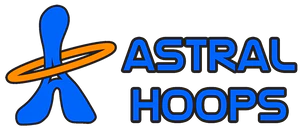
Only a handful of states have yet to officially observe Indigenous People's Day instead of Columbus Day, so we wanted to take a few moments out of your Monday to talk about the importance of relearning history, appreciating the spiritual significance of the native hoop dance, and how to give back to native communities.
History of the Native Hoop Dance
In Native American cultures, the hoop dance is used as a method of storytelling where dancers use 1 to 30 small, handmade hoops as props to tell a story through dance. The dancer interlocks the hoops on and around the body to represent animals and symbols by replicating wings or tails, and forming shapes like globes around the body.
There is no clear origin for the Native hoop dance, but the most popular story is from the Anishinaabe culture about a young boy who was not interested in typical activities like running and hunting, instead preferring to be alone and observe animals in nature. His father did not approve and even disowned him, but the boy didn’t let this stop him. Spending time with animals like eagles, snakes and bears inspired him to create a dance using hoops that emulated their movement.
The dance caught on and spread to other tribes and was passed down to future generations. To Indigenous cultures, the hoop became a sacred and important aspect of traditional healing ceremonies, representing the never-ending circle of life.

During the 1880s - 1930s, the United States government tried to assimilate Native Americans into U.S. culture by forcing their children into white schools, changing their names, and banning them from “participating in anything associated with their Native American culture including dance.” During the Pan-Indian Movement of the 1930s, Native Americans began to resist and take important parts of their cultures back. During this time, a young Native American named Tony White Hawk from the Jemez Pueblo tribe modernized the hoop dance. It quickly spread in popularity, and there is now a World Championship Hoop Dance Contest held annually in Phoenix, Arizona.
Ways to Give Back

Founded in 1970, the Native American Rights Fund (NARF) is the oldest and largest nonprofit law firm dedicated to asserting and defending the rights of Indian tribes, organizations and individuals nationwide.
Some of their current missions include: civil & human rights, environmental & water protections, education, protecting women from violence, and more.

First Nations Development Institute: Our mission is to strengthen American Indian economies to support healthy Native communities. We invest in and create innovative institutions and models that strengthen asset control and support economic development for American Indian people and their communities.
Some of their work includes: Achieving Native Financial Empowerment; Investing in Native Youth; Strengthening Tribal & Community Institutions; Stewarding Native Lands; and more.

Conscious Alliance is a national 501(c)(3) nonprofit organization committed to supporting communities in crisis through hunger relief and youth empowerment.
Among their variety of long-term initiatives is their dedication to the Pine Ridge Indian Reservation in North Dakota. Conscious Alliance neighbors us in Broomfield, CO and we've loved seeing their work in the community throughout the years.
References
https://www.aaanativearts.com/hoop-dance-pow-wow-dances
http://nativeamericanhoopdance.blogspot.com/p/references.html
https://askwonder.com/research/history-hoop-dancing-2pje0uwlh
